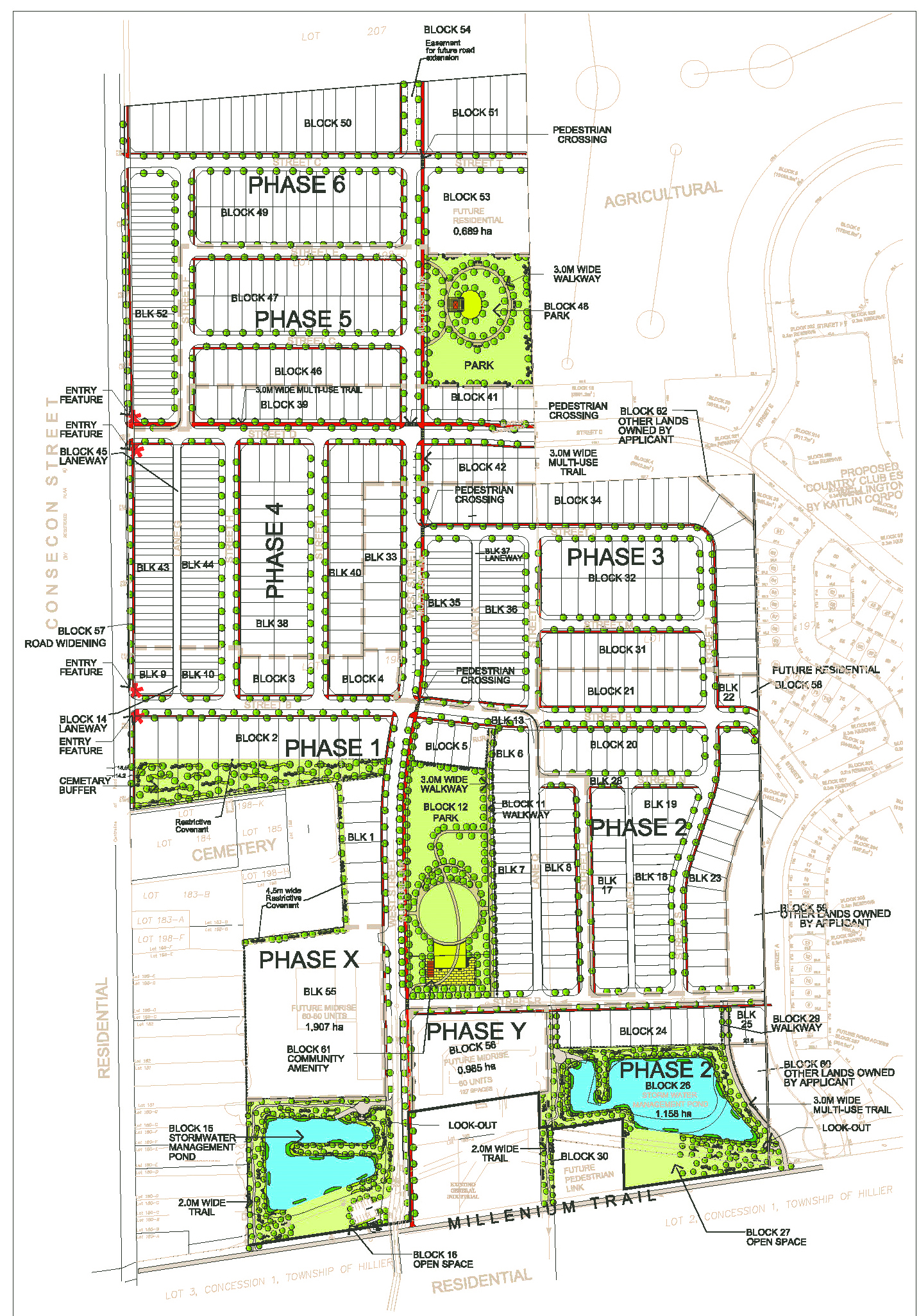Comment
The village forest
Wellington’s Secondary Plan was written as a shield against bad development. When the plan was pulled together in 2010 and 2011, this community’s eyes were wide open. It knew three big developers were planning to build hundreds of new homes north of the Millennium Trail. Bracing for this eventuality, the village spelled out requirements in its secondary plan designed to protect this community and its unique character and heritage.
Today, every resident is asked to become familiar with the Secondary Plan—to hold it up and use it to ensure planning and building officials understand the principles and values it embodies. And make clear to developers, “this is our home, we wrote the rules for growth in our community, and we insist they are followed.”
It will take a couple of decades or more for this buildout. It can go easy, or it can go hard. It is up to us—and only us—to ensure developers don’t roll over Shire Hall and our village. We cannot, and should not, sit back and hope that Shire Hall guards our village on our behalf.
Over the next few weeks, this column will highlight some of the critical themes of the Secondary Plan. It is partly an introduction for those who may be fearful of cracking the spine of a planning document (such reticence is unwarranted in this case since the Secondary Plan is accessible, written in plain English, and well organized).
It may also remind those who were there and for whom the details may have faded. Mostly, it is to underline the Secondary Plan’s role as a blueprint guiding the massive residential plans north of the Millennium Trail.
THE VILLAGE FOREST
Wellington’s Secondary Plan puts great emphasis on enumerating, preserving, and adding to the village’s lush bounty of trees. From the section 4.7.2 of the plan:
‘The village forest contributes greatly to the quality of life in Wellington and helps portray the community as a healthy, green, and attractive place for both residents and visitors.”
For more than a century—as Marjorie Wiltse’s photos illustrate most weeks— Wellington has been defined by its treelined streets.
To ensure this continues, the plan sets out specific policies that include compiling an inventory of the trees in the village. Helpfully, The County announced just a week ago that it was undertaking a list of County trees that it hopes will be ready by the fall.
development, the Secondary Plan requires that a tree must be planted along the street for each residential lot in a new subdivision. The plan also indicates that new trees be of a minimum size and a native species as determined by the County. Wellington’s Secondary Plan also urges the creation of a tree conservation by-law to protect mature trees from destruction or degradation.
A comprehensive landscape plan was prepared by the developer of Fields of Wellington (north of the cemetery, east of Consecon Street to roughly a line drawn northward from Wharf). It is a detailed plan that lays out streets, walkways, and green spaces, lined with trees. It is a great start. But that project is now in the hands of Kaitlin.
So far, Kaitlin has no such landscape submission for its subdivision (east of Wharf Street, across Belleville Road, from Millennium Trail to a line drawn roughly west of Gilead Road) listed on the County’s online portal for new development. Perhaps one is coming. We shall watch and wait.
In the meantime, we must impress upon the developer that the master landscape plan prepared for Fields of Wellington must be the baseline for expanding the village forest.
To do this, folks who care about Wellington and its future are encouraged to acquaint themselves with the tools provided in the Secondary Plan. They were created in this community to ensure that it remained a livable, walkable, and tranquil place under a canopy of green—even as it expands.
It starts with trees.


Thank you for highlighting the importance of trees and green space for a livable community not only for health and aesthetic values but also economic property values. I participated in the public meetings about a decade ago for the Wellington Secondary Plan and spoke up about the need to design future growth with respect to climate, energy, air, water and farmland. Ironically Mayor Mertens sat beside me, and as cordial as we all were, I had the feeling that any talk about limiting urban growth was my words blowing in the wind and out the window, proven true over all subsequent Shire Hall administrations as outside interests overrun local quality of life and houses have sprung up in cornfields and side by side mansions on formerly scenic shorelines. Fortunately the new tree inventory is a sign that we are collectively appreciating the pastoral qualities that make Prince Edward County the hub of tourism and the retirement destination that it has become. Developers need to be reined in with rules to protect our “commonwealth” and prevent further urban sprawl like they have in Newmarket, where that mayor parachuted into PEC from.